HISTORY WEEKEND. 20 years ago, the incredible meeting above the Tarn of the two parts of the deck of the Millau viaduct

On May 28, 2004, there was not much left before the meeting of the two parts of the apron. DOMINIQUE QUET
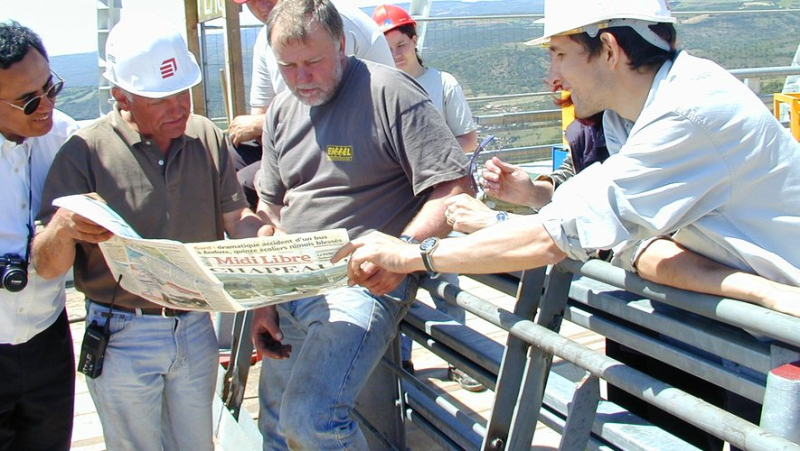
The day after the locking, Eiffel engineers (Marc Buonomo on the left) discovered the report in Midi Libre.
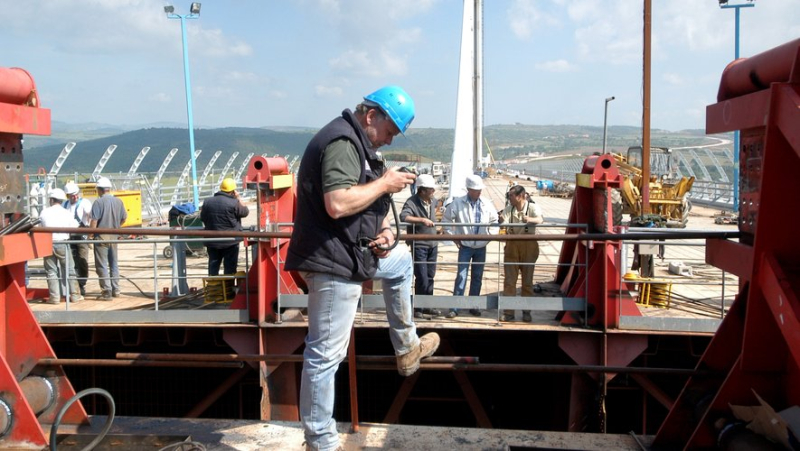
Le responsable du chantier Eiffel, Jean-Pierre Gerner, côté sud, à un mètre du tablier côté sud. SYLVIE CAMBON
On May 28, 2004, 20 years ago, the two parts of the steel deck came together above the Tarn, as one closes its grip on the void. A vice of growth. The bridge had finished growing. An incredible moment.
Leaning on the balustrade of the south beam, a worker seems to be rubbing his eyes: "It’s something crazy!".
A German journalist, who tries to share his amazement around the world, and in English, blurts out: "It’s amazing !< /em>".
The same images to express the same sensations, with just a few words, on the globalized steel of a bridge breaking planetary records in abundance. The Millau viaduct was, in the 2000s, a giant nourished by concrete, iron, realities and dreams, crazy desires and technological prowess, the most convincing rationality mixed with thirst. of excess.
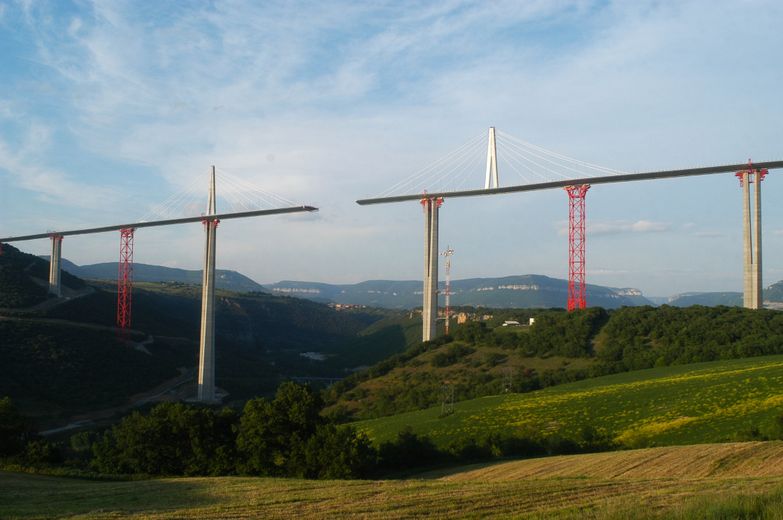
The red metal supports still temporarily support the structure. S.C.
At its peak, one morning in 2004, May 28, just 20 years ago. Only a few centimeters separate the two metal beams which are about to come together, after two and a half kilometers of slow progress over a year and a half. Large gap between two causses enthroned from the valley to the clouds, 360 meters above the Tarn river, pylons supporting the stays included.
Hydraulic cylinders that push the deck
In fact, the apron had been growing for a bit longer. The Eiffel factories in Lauterbourg, in Alsace, and Fos-sur-Mer, in Bouches-du-Rhône, built the panels and metal boxes which would form the framework of the deck. It would then be necessary to weld the boxes on site and "push" the two parts of the deck using hydraulic cylinders.
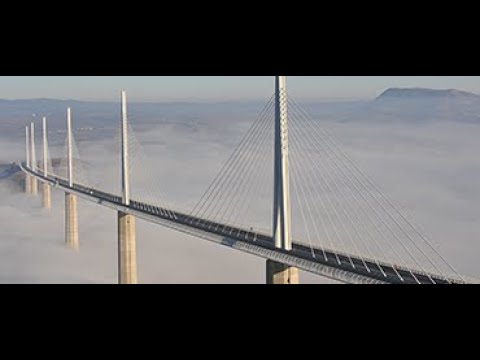
The joining of the two parties is expected on May 28. Eiffage even uses the romantic metaphor in its documentary Viaduc de Millau: an emblematic work: "The north is the first at the meeting point. A final push, the eighteenth, and the south begins to flirt. Both observe each other, they smell each other. Will they dare to take the final step ? Yes, by all appearances, these two are made for each other."< /p>
And to be sure that they wouldn't divorce, we were going to stick kilos of solder on them. 2:12 p.m. May 28. Mission accomplished. The keying, as we say in construction jargon, is carried out right below the river.
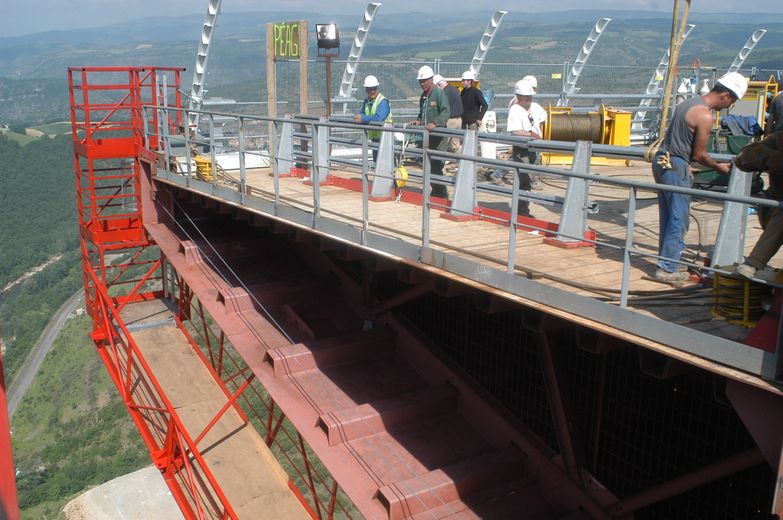
Mooring imminent for the two liners. SYLVIE CAMBON
We have to make up our minds: the viaduct will no longer grow in height or length. We can just imagine the expansion of the apron, varying by a meter and a half depending on the temperature. Suffice to say crumbs for this giant of 2,460 kilometers.
Before the inauguration seven months later, it will only be a matter of cosmetic cleaning: pouring bitumen, concrete dividing wall, plexiglass guardrails…
Dreams and realities
A little poetry flies away. Vanishing carelessness. The child has finished its moult, too quickly as usual. We will now have to think about toll rates, automobile traffic, travel times, and the contingencies of the modern world. And yet, this world has never been as present as during these three years of construction, in each schedule, in each pile, in each box. 36,000 tonnes of steel in the deck, 200,000 tonnes of concrete in the piles, a world height record at the time with 245 meters for the P2 on the banks of the Tarn. Always further, always higher, always faster.
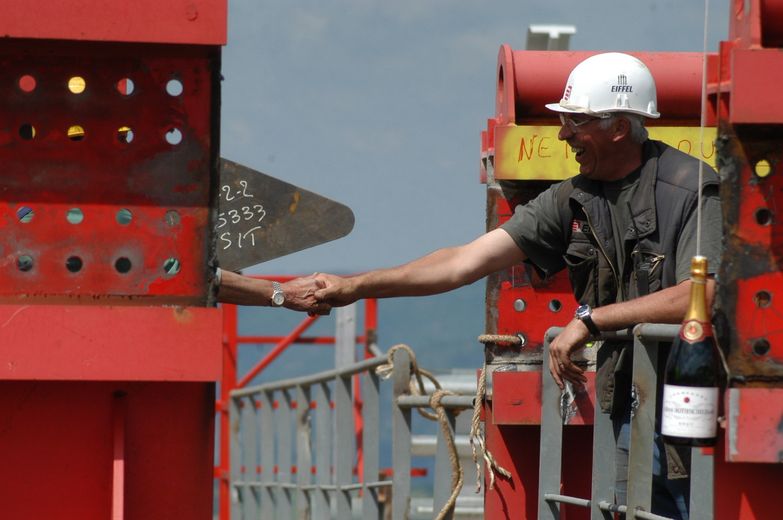
At meeting time, with a bottle of champagne to celebrate. S.C.
It was under the mixed seals of dreams and realities on the ground that the viaduct emerged. First in the mist of state services and in the calculations of one of its engineers, Michel Virlogeux. Then in the mind of the English architect Norman Foster. Finally, in the hands of the Eiffage group.
It took some contortions: the project, like a sea serpent, was getting bogged down. Too expensive. President Giscard-d’Estaing, in the 1970s, promised a free highway opening up the Massif Central, from Clermont-Ferrand to Béziers, from the mountains to the sea. By finding a solution to the traffic jams crossing Millau , the nightmare of motorists.
But it was precisely the passage to Millau that posed the problem. We had to cross two plateaus. And it was going to cost nearly 400 million euros.
A privatized viaduct
It was ultimately, ironically, a communist minister, the Biterrois Jean-Claude Gayssot, who privatized the construction of the viaduct. A public contract further, it was therefore the Eiffage group which obtained the construction of the work, concession contract for 78 years, insured cash drawer.
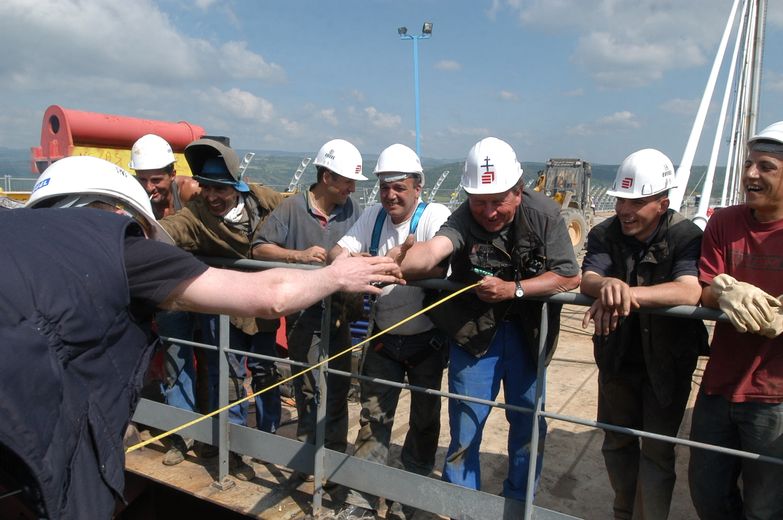
Two hands outstretched like a culmination: 2.5 kilometers completed. S.C.
The company had convinced by offering an attractive alternative to all-concrete: a metal deck, in which the Equipment engineers did not believe. Too much span between each pile in front of everyone for a metal solution to be credible. In the eyes of everyone, therefore, except through the filter of Marc Buonomo, director of works of art for Eiffel, a subsidiary of Eiffage, aided in this by a steel lobby conscious of a big move to play.
"Already in his time, Gustave Eiffel wanted to show that we could build in steel, cross large gaps, make light ", insists Marc Buonomo.
The deadline was attractive: the deck could be welded on dry land, a metal beam built to the north, on the Causse rouge, another to the south, on the Larzac. And the two parties, promised, would find each other with their eyes closed, to the nearest centimeter. Something crazy.
Eiffel has since been forced to change its name, following the trials for usurpation of a descendant of the engineer. It was renamed Eiffage metal.
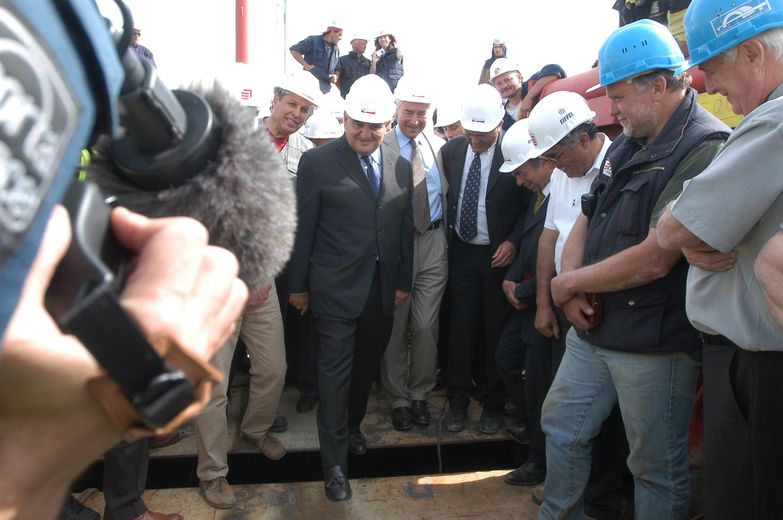
Jean-Pierre Raffarin, the Prime Minister, made the trip. SYLVIE CAMBON
Big pomp and big money
Prime Minister Jean-Pierre Raffarin came with his Minister of Transport, Gilles de Robien, to celebrate the joining of the two parts of the deck on May 28, 2004.
The bridge was inaugurated on December 14, by the President of the Republic Jacques Chirac, surrounded by 800 workers and engineers. Before being put into circulation two days later, on December 16…
It cost at the time, for light vehicles, 4.90 € in winter and 6.50 € summer. In this year 2024, after regular annual increases, you will have to pay 10.90 € in winter and 13.90 € summer. Amounts more than doubled!
I subscribe to read more




